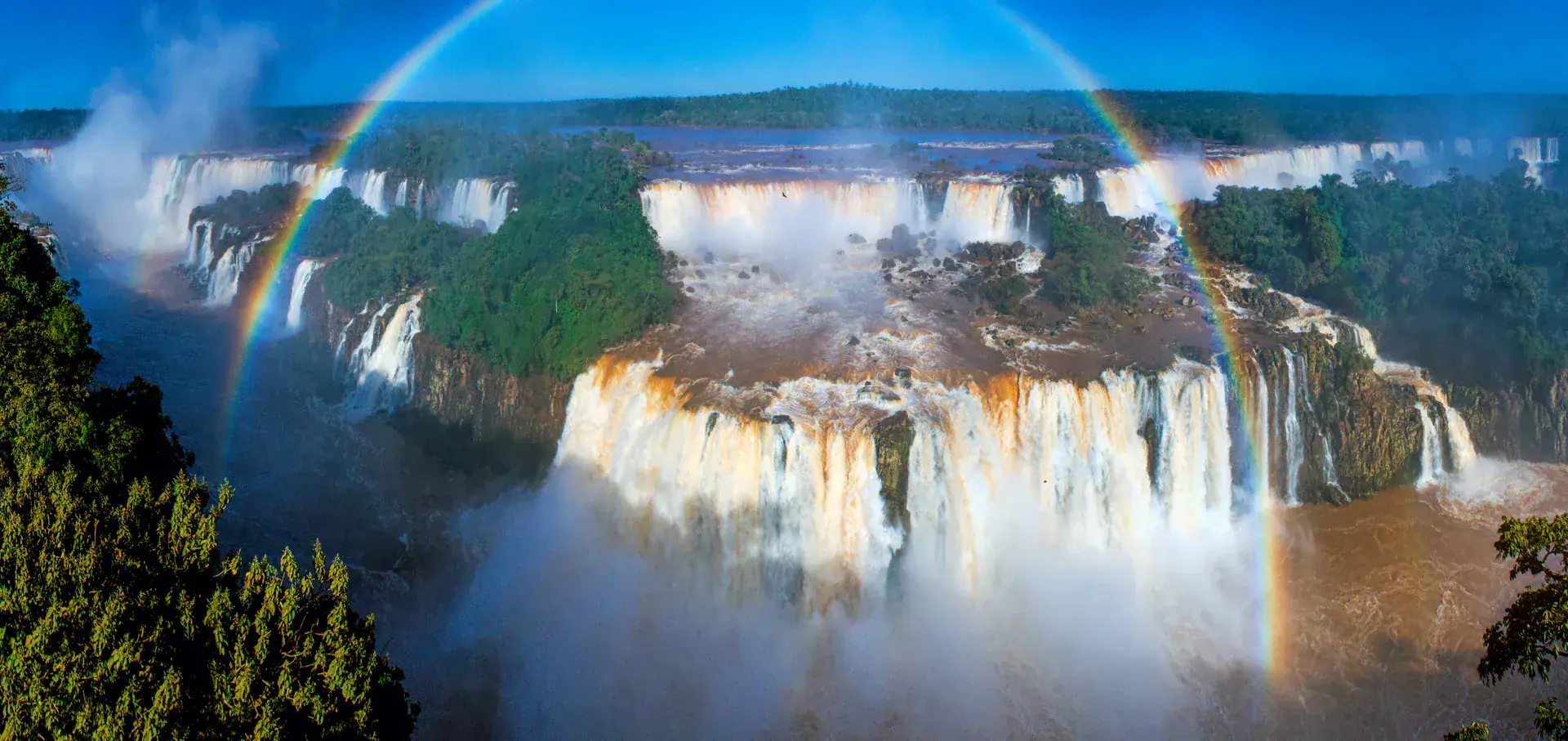
Iguazu Falls and the Endangered Atlantic Forest Wildlife
Devil's Throat Cascades Through Protected Subtropical Wilderness
About This Site
Iguazu National Park encompasses the Argentine portion of one of the world's most spectacular waterfall systems, where 275 individual cascades including the thunderous Devil's Throat plunge through subtropical rainforest with extraordinary force and beauty. This UNESCO World Heritage Site protects 67,620 hectares of critically endangered Atlantic Forest, supporting over 400 bird species including endemic Great Dusky Swifts, five wild cat species such as jaguars and pumas, and 2,000 plant species within dense green cathedral environments, whilst providing exceptional wildlife viewing opportunities alongside world-class waterfall photography from elevated boardwalk circuits offering multiple dramatic perspectives throughout diverse trail systems designed for sustainable conservation tourism.
Why It Matters
Represents South America's most spectacular waterfall concentration with 275 cascades within Argentina's largest Atlantic Forest fragment, supporting extraordinary biodiversity including five wild cat species, endemic Great Dusky Swifts nesting behind waterfalls, and over 2,000 plant species in this critically endangered subtropical ecosystem essential for regional conservation.
Key Attractions
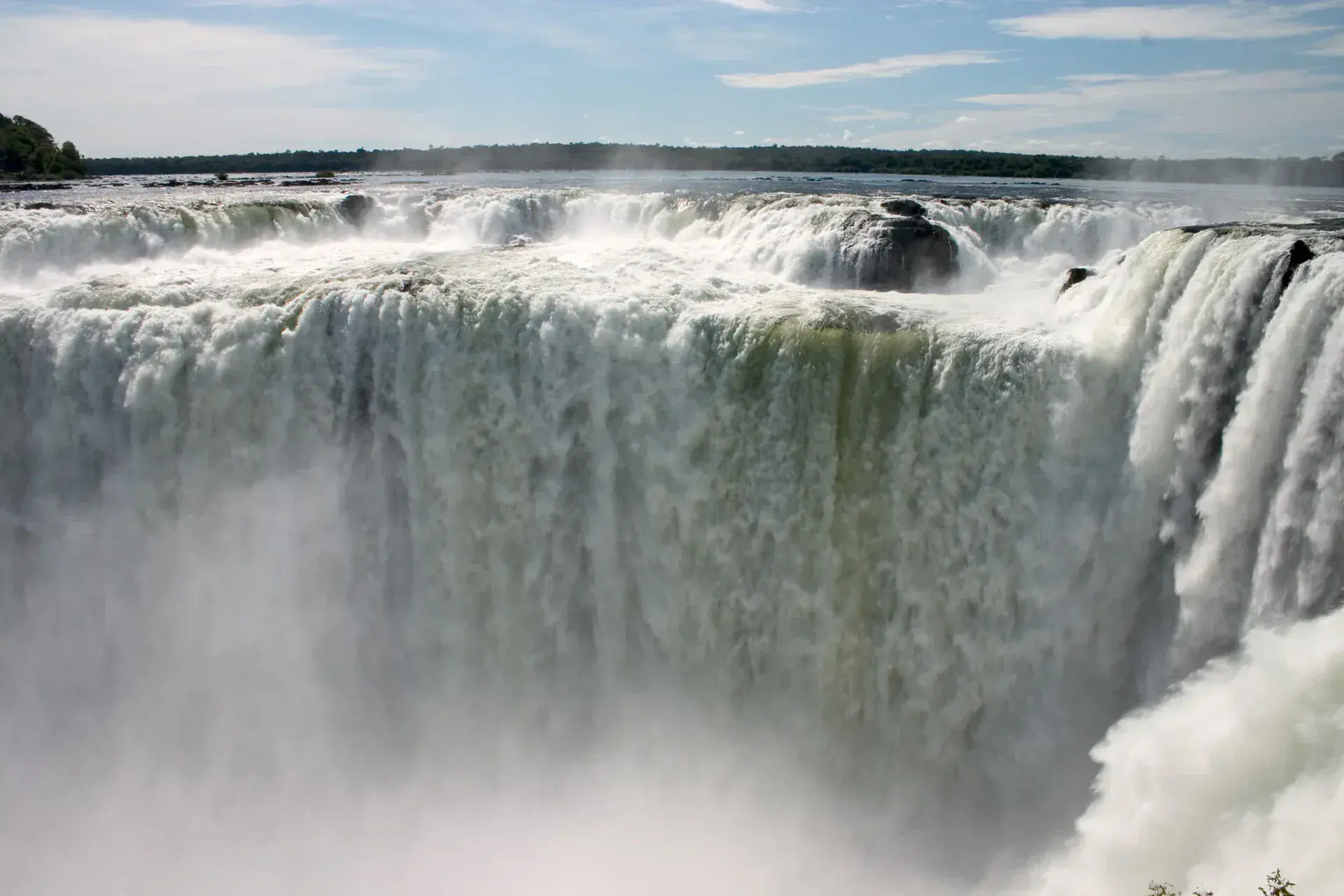
Devil's Throat (Garganta del Diablo)
The most spectacular section of Iguazu Falls, where fourteen powerful waterfalls converge in a dramatic horseshoe-shaped chasm measuring eighty-two metres high and one hundred fifty metres wide. This thunderous natural amphitheatre creates perpetual rainbow mists and represents the falls' most concentrated display of raw power. The elevated viewing platform suspended directly over the chasm provides an unforgettable sensory experience of nature's overwhelming force. The constant spray creates unique microhabitats supporting endemic species adapted to this extraordinary waterfall environment. Essential viewing from multiple vantage points along the Upper Circuit walkway system.
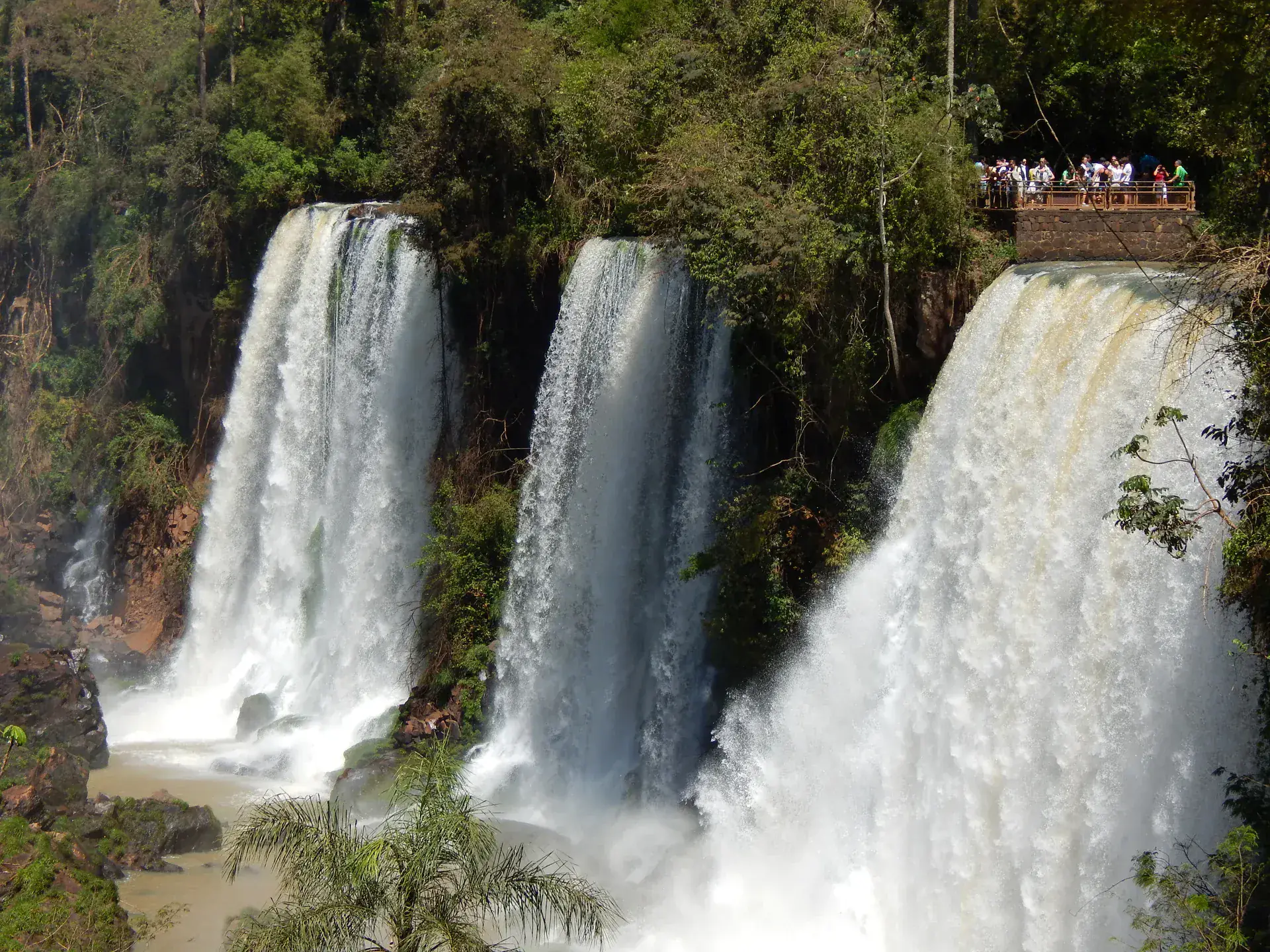
Upper Circuit Trail
An elevated walkway system stretching 1.7 kilometres through the forest canopy, providing spectacular panoramic views over the falls' upper cascades and allowing visitors to witness the dramatic transformation as peaceful river water plunges into the gorge below. Multiple viewing platforms showcase different waterfall perspectives, from intimate encounters with smaller cascades to sweeping vistas of the entire system. The accessible boardwalk construction makes this trail suitable for visitors of all fitness levels while offering exceptional photography opportunities. Educational interpretation panels enhance understanding of the geological forces and ecological processes that created and sustain this remarkable natural wonder throughout the subtropical climate.
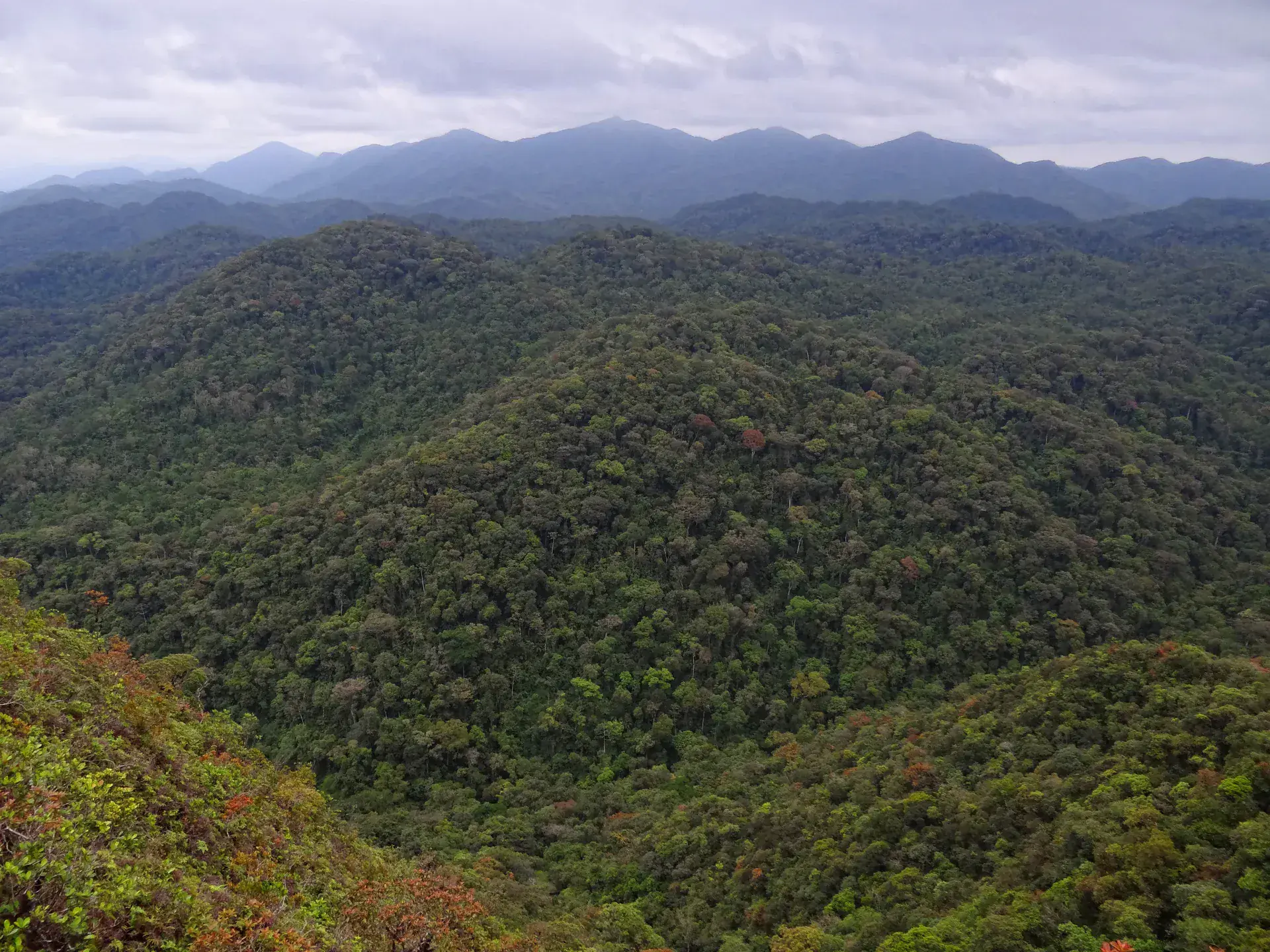
Atlantic Forest Biodiversity
One of Argentina's most biodiverse ecosystems, this critically endangered subtropical rainforest protects over two thousand vascular plant species and serves as sanctuary for jaguars, pumas, five wild cat species, and more than four hundred bird species. The forest creates a living green cathedral with towering emergent trees, dense epiphyte communities, and multiple canopy layers supporting extraordinary wildlife diversity. Morning and late afternoon wildlife viewing sessions offer optimal opportunities to observe toucans, coatis, howler monkeys, and hundreds of butterfly species. This ecosystem represents the largest remaining Atlantic Forest fragment in Argentina, functioning as a vital genetic reservoir and wildlife corridor essential for species conservation across the region.
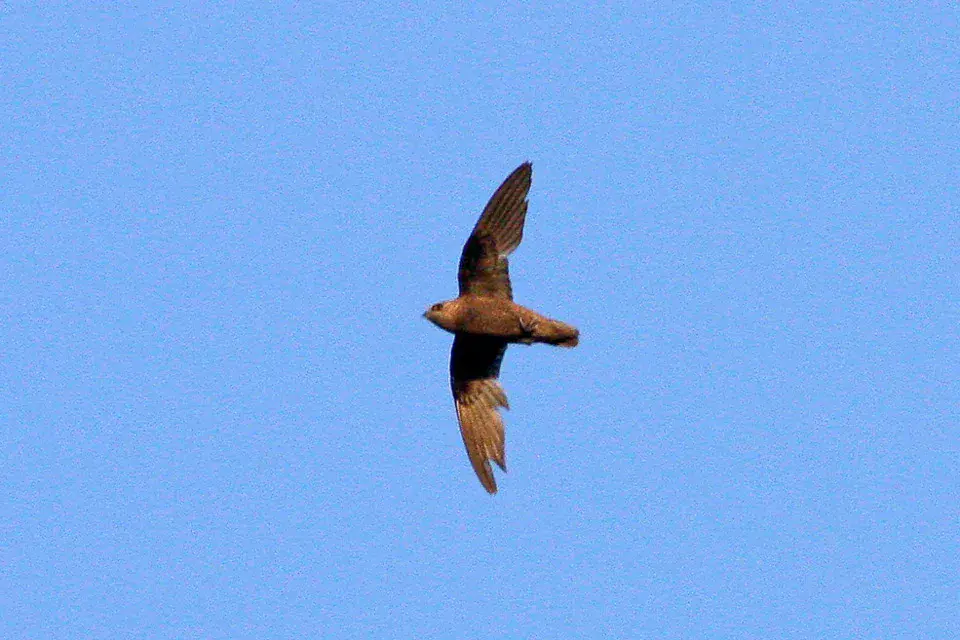
Great Dusky Swift Colonies
A remarkable bird species demonstrating extraordinary evolutionary adaptation to waterfall environments, these unique swifts nest exclusively behind the cascading water curtains and must fly directly through the powerful spray to reach their nest sites. Found nowhere else in such concentrations, these endemic birds showcase nature's incredible ability to exploit challenging ecological niches. The colony's daily flights through the waterfall create spectacular viewing opportunities, particularly during morning and evening activity periods when hundreds of birds navigate the treacherous water barriers. Their presence indicates the exceptional health of this waterfall ecosystem and represents one of the world's most specialised avian adaptations to aquatic environments.
Location & Planning
Accessible from Puerto Iguazú (Argentina) or Foz do Iguaçu (Brazil) via airport or bus. Purchase tickets at park entrance. Free ecological train connects visitor centre to trails.
Loading map...
Frequently Asked Questions
Iguazu Falls is a massive waterfall system with 275 individual cascades spanning 2.7 kilometres on the Argentina-Brazil border. Famous for its outstanding natural beauty, including the spectacular Devil's Throat chasm and exceptional Atlantic Forest biodiversity supporting over 2,000 plant species.
Over 400 bird species including Great Dusky Swifts nesting behind waterfalls, five wild cat species (jaguars, pumas, ocelots), curious coatis, colourful toucans, and diverse butterfly populations. Dawn and dusk offer best viewing opportunities along quieter trails.
March through September offers optimal weather during the dry season with comfortable temperatures (15-25°C) and reduced rainfall. Wildlife viewing is exceptional as animals congregate around water sources, though the falls maintain impressive flow year-round from the Iguazu River.
Argentine side offers closer waterfall access with comprehensive trail systems allowing intimate views from multiple perspectives, including walking behind cascades. Brazilian side provides spectacular panoramic overview perspectives of the entire falls system from elevated viewpoints.
Entry requires tickets purchased at park entrance or online in advance. Argentine side costs approximately 800 ARS for foreigners. No special permits needed for main trails. Boat tours to waterfalls require separate advance booking during peak season.
Waterproof camera protection, comfortable walking shoes with good grip, insect repellent, high-SPF sunscreen, and binoculars for wildlife viewing. Pack light layers as morning temperatures can be cool, whilst midday heat increases significantly throughout the subtropical day.
UNESCO World Heritage Criteria
Inscribed in 1984, this site meets 2 of UNESCO's 10 criteria for Outstanding Universal Value
Criterion (vii): Contains superlative natural phenomena
Iguazu Falls contains superlative natural phenomena through 275 individual cascades stretching 2.7 kilometres, including the awe-inspiring Devil's Throat where torrential waters plunge 82 metres creating thunderous displays visible for kilometres, whilst permanent mist and rainbows produce extraordinary visual spectacles of raw natural power.
Criterion (x): Contains threatened species
The park provides essential habitat for threatened species including jaguar, giant otter, and harpy eagle populations, whilst protecting over 2,000 vascular plant species within endangered Atlantic Forest ecosystems, serving as critical biodiversity refugia where subtropical rainforest meets one of Earth's most spectacular waterfall systems.
Historical Context
Indigenous Heritage (Pre-1541)
Indigenous Guaraní peoples inhabited this region for generations, calling the waterfalls "Iguazú" meaning "big water". Their sophisticated understanding of forest ecology enabled sustainable living within the Atlantic Forest. Guaraní legends describe the falls' creation when a jealous serpent deity split the river.
European Discovery (1541-1880s)
Spanish explorer Álvar Núñez Cabeza de Vaca became the first European to document the falls in 1541, naming them "Saltos de Santa María". The remote location remained largely unchanged for three centuries until late nineteenth-century naturalists began documenting the region's extraordinary biodiversity and geological significance, sparking international attention.
Early Tourism (1880s-1934)
Pioneer settlers established the first access routes and accommodation facilities near the cascades. Growing international awareness prompted calls for formal protection before commercial development could threaten the pristine Atlantic Forest ecosystem and exceptional biodiversity. This period saw increasing recognition of the falls' universal value.
National Park Era (1934-1984)
Argentina established Iguazu as a national park in 1934, implementing comprehensive protection for the waterfall system and Atlantic Forest. Scientific research documented exceptional biodiversity, including Great Dusky Swifts nesting behind waterfalls. International recognition grew as biologists highlighted its critical role for wildlife conservation.
UNESCO Recognition (1984-Present)
UNESCO inscription in 1984 recognised Iguazu's outstanding universal value combining natural beauty with biodiversity importance. Biosphere Reserve status in 1995 enhanced international cooperation for Atlantic Forest protection. Modern infrastructure demonstrates successful balance between conservation and visitor access.
Conservation & Protection
Current Conservation Status
UNESCO World Heritage Site since 1984 and UNESCO Biosphere Reserve since 1995, providing dual international protection frameworks for waterfall systems and critically endangered Atlantic Forest ecosystem conservation across this exceptional biodiversity hotspot.
Conservation Challenges
- Regional deforestation from agricultural expansion threatening essential wildlife corridor connectivity
- Illegal hunting activities targeting endangered jaguar populations requiring enhanced enforcement measures
- Tourism pressure on fragile ecosystems requiring careful visitor flow management strategies
- Climate change impacts affecting seasonal rainfall patterns and Atlantic Forest species distribution
- Invasive plant species threatening native vegetation communities and forest ecosystem dynamics
Active Conservation Efforts
- Wildlife corridor maintenance programmes coordinated with Brazilian Iguaçu National Park ensuring genetic diversity and essential migration routes for jaguars, pumas, and other large mammal populations
- Advanced anti-poaching patrol systems using GPS tracking technology, camera traps, and coordinated surveillance operations protecting endangered species across protected boundaries
- Sustainable tourism infrastructure including ecological train systems minimising environmental impact and habitat disturbance whilst providing excellent visitor access to key sites
- International cooperation initiatives supporting Atlantic Forest research, restoration projects, and community-based conservation education programmes across regional boundaries with Brazilian authorities
- Scientific monitoring programmes tracking water quality parameters, biodiversity indicators, and climate change impacts to inform adaptive management strategies for ecosystem protection
- Community engagement projects involving local Guaraní communities in traditional ecological knowledge sharing and sustainable development initiatives that benefit both conservation and local livelihoods
Image & Content Attribution
Research & Content Sources
Last updated: 10 October 2025